C.S.Rajan, Justice
The Secret of the Temple : The discovery of treasure worth billions of dollars shakes southern India.
Nobody knew for certain what was hidden beneath the ancient Sri Padmanabhaswamy temple, in Trivandrum, India. But a lawyer named Ananda Padmanabhan had a hunch. According to legend, treasure was sealed in the temple vaults, and Padmanabhan, who was passionate about history, knew that in centuries past maharajas had performed a ceremony in which they weighed local princes approaching adulthood, then donated to the temple an equivalent weight in gold. Padmanabhan believed that these riches were still hidden in the basement, uncounted and unguarded.
Padmanabhan, who is thirty-nine, has spent his life in Trivandrum, which is at the southwestern tip of India, in the state of Kerala. His home and his law office are on historic Brahmin Street, just outside the gates of the temple, which has a monumental seven-story tower whose pale granite façade is a tapestry of stone, etched with ornate images of gods, nymphs, sprites, and demons. On the day that I had arranged to meet Padmanabhan, in mid-October, I found him in the middle of the street, barefoot, in a downpour. He was staring at the temple, as if in a trance. I tried to get his attention, but couldn’t. Eventually, a clerk from his office brought him an umbrella, which he took without turning his head.
After several minutes, Padmanabhan looked at me, smiled, and explained that he had been praying. There was a festival that day, and the temple’s custodians had removed an idol from the sanctum sanctorum and were parading it around a courtyard. He was hoping to get a glimpse of it. The idol, he told me, “is like an incarnation of God, so it is as if God himself is coming out of the temple.” Like many observant Hindus, Padmanabhan believes that a temple’s deity—in this case, the supreme god Vishnu—resides within its walls. Worshippers come to make offerings of flowers, incense, silver, and gold. Whatever wealth accumulates belongs to the deity. Padmanabhan told me that it had become his driving purpose in life to serve Vishnu and, in so doing, protect the deity’s hoard. He explained, “In Lord Krishna’s Bhagavad Gita, he says we are only small things before the great lord. So if he says, ‘Dance,’ we dance, and if he says, ‘Sit,’ we sit. I am just a mosquito before him.”
Deities can actually own property in India, though the law treats them as minors and they must be represented by an official guardian. At the Sri Padmanabhaswamy temple, the Maharaja of Travancore has this role. Travancore was a kingdom that once encompassed much of southern India. Although it ceased to exist in 1947, when India became independent, the maharajas have continued to preside over the temple, both as spiritual leaders and as custodians of the deity’s wealth. For centuries, the royal family’s management of the temple received little scrutiny: there were no complete or easily accessible records of what the deity owned, or how the maharaja used this wealth to maintain the temple. Nobody challenged the arrangement until 2007, when Padmanabhan brought a lawsuit against the temple administration, on behalf of two devotees.
Padmanabhan and his clients argued that the head of the royal family, ninety-year-old Marthanda Varma, had mismanaged the site, and that the government should appoint a new trustee to safeguard the deity’s wealth. Even though Varma is not officially a maharaja, as his ancestors were, he is revered in Kerala, and many of his supporters refer to him as the King. Padmanabhan thought that his lawsuit might prove unpopular, but before long several other Indians joined the case, including the leader of a union of temple employees, who believed that treasures had been taken from the site.
In the lawsuit, Padmanabhan alleged that a series of kallaras—treasure vaults—existed beneath the temple, at and ththey were being looted. In any case, the temple was poorly guarded; as one member of the royal family told me, until recently security at the temple consisted of men “holding wooden sticks.”
The temple’s executive, Sasidharan Nair, denied the charges of mismanagement and said, in a sworn statement, that “the allegation that there is a treasure-hoard kept in some kallaras is false”; there was nothing beneath the temple except a few unused rooms “covered with cobwebs and dust.” The plaintiffs, Nair said, were spreading “old wives’ tales and gossipy rumors.”
Padmanabhan took me back to his office, which is filled with books and has two swords on display. He sat behind a large desk and asked me if I wanted tea. When I said yes, he picked up a remote control with a single button and pressed it. A clerk soon arrived, carrying a tray with two glasses of tea.
I asked Padmanabhan what had made him so confident that there was treasure. “These are all historical books,” he said, gesturing at his library. “It is all here.” He pressed the remote control again, and the clerk reappeared. Padmanabhan uttered a command in Malayalam, the regional language. The clerk squeezed between the back of Padmanabhan’s chair and a bookcase, removed a large volume, handed it over, and vanished. Padmanabhan opened the book to a chapter on the temple, and read aloud a sentence that he had underlined: “A cellar underneath the shrine secures the temple jewels.”
Perhaps I looked unconvinced, because Padmanabhan pressed his remote control once again. The clerk returned and retrieved another book. Padmanabhan read me a passage noting that, in 1855, the regional government had “faced financial difficulties” and, to cover its expenses, had taken out a sizable loan from the temple. Padmanabhan said, “People who studied history knew that treasure was there.”
The temple amassed much of its riches in the early eighteenth century. At the time, the Maharaja of Travancore was battling local chieftains. His main rivals were known, collectively, as the Lords of the Eight Houses. One day, these men gathered at an inn, south of Trivandrum, and plotted to assassinate him, during a festival at the Sri Padmanabhaswamy temple. The plan might have succeeded had it not been for an old man—the keeper of the well attached to the inn—who overheard the conspirators and sent word to the Maharaja. On the day of the festival, the Maharaja showed up at the temple armed, with a contingent of soldiers; he eventually ordered a number of rebels to be executed, seized their wealth, levelled their homes, and sold their wives and children into slavery.
The Maharaja went on to conquer nearby kingdoms, whose wealth was considerable. As the writer Gurcharan Das has chronicled, Indian kings and merchants had been accumulating profits from the spice trade for nearly two thousand years. In ancient Rome, senators lamented that local women used too many Indian luxuries, and, in 77 A.D., Pliny the Elder proclaimed that India had become “the sink of the world’s gold.” In the sixteenth century, the Portuguese echoed this sentiment, complaining that too much of their silver from the New World was going to India; after the British arrived on the subcontinent, they made similar protests.
The historian T. P. Sankrankutty Nair has written several books about the Kingdom of Travancore. When I visited him at his home, in Trivandrum, he told me that the Maharaja “was a very cruel man” who, after murdering so many, yearned for absolution. “As repentance, he dedicated his entire kingdom to God, in 1750,” Nair explained. “Whatever things he had collected by defeating all those kings—all the valuables, gold, silver, ornaments, and coins—he gave to the Lord.” This wealth, Nair said, was locked up beneath the temple. But it wasn’t clear what happened to those riches over the centuries. “We never cared to look into that,” he told me, somewhat defensively. “It was not the concern of us historians to study the wealth of the temples. It was beyond our jurisdiction.”
He motioned to me to follow him into his living room. On the walls were black-and-white photographs of his deceased relatives. Several photographs were adorned with flowers. Nair, like many Hindus, reveres his ancestors almost as deities; one of his grandfathers, he said, had kept his most valuable possessions in a small wooden box, which Nair had inherited. “I’ve never ventured to open it,” he said.
Why not?
“Probably it contains wealth, probably it contains a diary and some letters written by him,” he said. Many people in India had boxes like this. “Sometimes these boxes contain valuables and sometimes nothing—but, because of our belief in ancestors, we don’t care to open it. We keep them as something almost divine.”
Nair offered to show me the box, but his house was in disarray because of a construction project; after searching for a few minutes, he told me that he wasn’t certain where it was. He didn’t seem particularly concerned. His relaxed attitude about his grandfather’s box seemed similar to his feelings about the temple’s treasury. Did he ever worry that someone might try to rob the site? No, he said. “Whatever is there will be preserved by the deity.”
Like Nair, most residents of Trivandrum had not been clamoring for the temple’s vaults to be searched. This had initially puzzled me. In America—a nation of conspiracy-obsessed newshounds that places high value on “closure”—it’s inconceivable that a mysterious, locked door would be left alone. (Recall Geraldo Rivera breaking into Al Capone’s vault, in the nineteen-eighties.) But in India the wealth stored in the vaults of Hindu temples is viewed largely in spiritual, not monetary, terms. William Harman, a scholar of Hinduism at the University of Tennessee, told me, “People make deals with deities, and if they receive what they want they pay up.” Any treasure inside the Sri Padmanabhaswamy temple, Harman said, embodied “centuries of vows.”
I read several histories of Travancore but could find no detailed accounts of the temple’s wealth. One of the most popular books was written by a member of the royal family, Princess Lakshmi Bayi; it makes no mention of a treasury, or of underground kallaras. However, I did come across a tantalizing account, from 1870, of life in Trivandrum by a British missionary named Samuel Mateer. After noting that Europeans were prevented, “by native prejudice,” from entering the temple, he added, “It is said that there is a deep well inside the temple, into which immense riches are thrown year by year; and in another place, in a hollow covered by a stone, a great golden lamp, which was lit over 120 years ago and still continues burning.”
One day, I visited the central archive of Trivandrum, whose records go back to the thirteen-hundreds. At first glance, the place looked like a warehouse for wicker mats. Until a century ago, scribes, using metal styluses, recorded the temple’s activities on long palm leaves, and the archive’s hallways were lined with shelves containing bundles of dried fronds. An archivist showed me one leaf that was a yard long and an inch wide. It was the original deed from 1750, in which the Maharaja gave his kingdom to the deity. There were ten million leaves like it in the archive. “A careful researcher who read through these leaves would get a sense of the wealth hidden in the temple,” an archivist told me. “But it would be a big task—an enormous task.”
R.Chandrankutty is a leader of the Indian National Trade Union Congress—the union that lent its support to Padmanabhan’s suit. In Trivandrum, the organization represents roughly fifty temple employees, including clerks, sweepers, and priests. Some of these members have reported that valuables have been stolen from the temple, including a large ivory flute and an ancient ring adorned with nine precious stones.
When I met with Chandrankutty, at the union office, he offered more details, alleging that the flute was taken from a storage area containing ceremonial items, and the ring from the finger of the main idol, inside the sanctum sanctorum. Whoever stole the ring, he said, had replaced it with a cheap replica. He suspected that other temple employees, with the knowledge of the management, were to blame.
Chandrankutty said that after voicing his concerns to the temple’s assistant officer, to no avail, he decided to join the lawsuit. But this choice came at a price, he claimed: another union member—a senior clerk named K. Padmanabha Das—had been nearly killed for his involvement in the case. Chandrankutty then informed me that Das would be arriving shortly to tell the story himself.
Das, in his mid-fifties, was soft-spoken, and covered his potbelly with a loose-fitting dhoti. He said that, as a youth, he had worked at the temple as a percussion artist, in an orchestra of five players. Over three decades, he had worked his way up to senior clerk. Starting in 1993, Das noticed that objects occasionally went missing from the temple: precious stones adorning the main idol, a silver pot, the ivory flute. He said of the flute, “It was quite old, made out of a single tusk of an elephant.”
Not long after Das learned of Padmanabhan’s lawsuit, he joined it. His participation was crucial, Padmanabhan told me, because he was a credible eyewitness who had worked at the site for decades.
Das was working at the temple on the day that he was attacked. He says that he saw several men attempting to load six large ceremonial lamps into a van; they told him that the lamps were going to Pattom Palace, where Varma resides. “I told them, very strictly, that I wouldn’t allow them to do that,” Das recalled. Later that evening, as Das was returning home, two men accosted him and doused him with acid.
Padmanabhan, hearing the news, rushed to the hospital. “Flesh was coming off Das’s body,” he recalled. It took Das months to recover. When I asked Padmanabhan why Das had been attacked, he replied, “He had not yet given testimony, and they probably wanted to stop him.”
The royal family denies any involvement in the acid incident. The family’s lawyer says that Das concocted the story, and was subsequently fired from the temple for improper conduct. Das, for his part, says that he was dismissed only after he made it clear that he would not remove himself from the lawsuit.
In the union office, Das told me, “I will show you what they did.” He pulled up his dhoti and his shirt, revealing ghastly scars along his thighs and his torso.
Padmanabhan, based on his research, believed that there were at least six kallaras beneath the temple: two containing ornaments used daily by the priests, two containing ornaments used only at festivals, and two that were very rarely opened. He suspected that the biggest hoard was in these last two kallaras, later dubbed Vault A and Vault B. Yet he feared that all the vaults were vulnerable to theft, and so when he filed his lawsuit, in September, 2007, he requested an injunction to restrain the temple management, and its “henchmen,” from touching the vaults.
A few days later, Marthanda Varma gave an interview to a local Malayalam-language newspaper, the Kerala Kaumudi, in which he admitted that there was a “secret vault” in the temple containing “wealth accumulated by the Travancore royal family over generations.” The hoard, he said, had been growing since 800 A.D., and included “precious gold ornaments and coins from various countries.” He added that he had never seen the treasure, and that the vault had not been opened since 1885.
Padmanabhan was pleased to have the treasure’s existence confirmed, but he was alarmed by Varma’s suggestion that it belonged to the royal family. (Varma’s family insists that he was misquoted.) As Padmanabhan knew, after India became independent, in 1947, the royal family of Travancore surrendered its power to the Indian government. In return, the family’s leader at the time—Varma’s older brother—was allowed to collect a “privy purse,” essentially a trust fund doled out to former princes by the Indian government. He was also permitted to keep his status as ruler of Travancore, enabling him to preside over the Sri Padmanabhaswamy temple. Then, in 1971, Prime Minister Indira Gandhi led a populist campaign that culminated with the Twenty-sixth Amendment to the Indian Constitution, which abolished the privy purse and stripped royals of their “ruler” status. As Padmanabhan saw it, this legal change meant that Marthanda Varma had no business asserting control over the temple.
The lower court in Trivandrum agreed with virtually every aspect of Padmanabhan’s argument, saying, “This great temple should not be left to the whims and fancies of certain private individuals.” The court ordered the government to take over the temple, and appointed two commissioners to serve as witnesses whenever temple workers opened a vault, including those used for festival ornaments.
Early one morning in October, 2008, as the temple prepared to hold its biggest annual festival, Padmanabhan accompanied the two commissioners into a storage area behind the sanctum sanctorum. Confirming Padmanabhan’s suspicions, they found doors to six kallaras. They unlocked and entered the two kallaras containing the festival ornaments, which were later dubbed Vaults C and D. Inside, they found dazzling objects, including a golden bow and arrow, umbrellas made with gold rods, and a golden throne for the deity embedded with hundreds of precious gems. The items were probably worth millions of dollars. It was difficult to know if anything was missing, because there was no detailed registry, but the commissioners reported, among other things, that someone had taken forty-four hooks off a golden umbrella and replaced them with hooks made from inferior metal. The temple staff had shown “carelessness,” the commissioners noted, and added that current security measures were inadequate.
Padmanabhan was eager to have the remaining vaults opened, but he had to wait: the royal family had appealed to the High Court of Kerala. Lawyers for the royal family argued that Varma’s ancestors had ruled Travancore for more than a thousand years, and had a legacy of presiding over the temple as spiritual leaders. For centuries, a maharaja from the family had led processions at the temple, and had escorted the idol when it was marched to the sea, twice a year, for a ritual bathing. By custom, the maharaja even had to ask the deity for permission to leave town. This special relationship, the royal family contended, had not been severed by the Twenty-sixth Amendment. Moreover, the royals had not been involved in any theft; on the contrary, Varma had regularly contributed money to make up the temple’s budget deficits.
“You noticed nobody gives a damn about beached minnows.”
The legal fight intensified when Padmanabhan’s seventy-year-old uncle, T. P. Sundararajan—the senior partner in his law practice—joined the lawsuit. He tried to get the royal family’s appeal dismissed by filing a writ with the High Court that challenged Varma’s claim to authority over the temple. Sundararajan, who was extremely pious, quickly became the public face of the case. He visited the temple many times each day, starting at 3:30 a.m., and looked more like a guru than like a lawyer. He dressed in a dhoti, had a wispy white beard that trailed down to his waist, and regularly smeared across his forehead a tilaka, a pitchfork-shaped design that signifies enlightenment. He had once been regarded as a friend of the royal family—he had been a confidant of Varma’s older brother, the previous maharaja. But he was not close to Varma.
Before becoming a lawyer, Sundararajan had been a police officer, then an agent for the Intelligence Bureau of India. He had also served as a member of the security team charged with protecting Indira Gandhi. His boss at the Intelligence Bureau, Mayankote Kelath Narayanan, is now the governor of West Bengal. Narayanan told me that Sundararajan “had a brilliant mind,” but that what really set him apart was his high ethical standards. “He would never make any compromises,” Narayanan said. Sundararajan, he argued, had “nothing to gain” by involving himself in the temple lawsuit, and had acted only because “he felt that things were not being done according to the rule book.”
After leaving the Intelligence Bureau, Sundararajan became a law professor, and also took on public-interest cases. In one landmark suit, he helped a client claim an inheritance that was denied to her because she was a woman. He also helped a woman named Nalini Netto win a sexual-harassment lawsuit against a powerful Indian official. Netto told me that Sundararajan had given her “the spiritual strength to stand up through the whole thing.”
In January, 2011, Sundararajan’s arguments met with approval from the High Court of Kerala, which upheld the lower court’s ruling, saying that it was “absurd” to call Sri Padmanabhaswamy a “family temple.” Nor did the royal family have a right to oversee the temple’s wealth: “Since the deity is a perpetual minor in the eyes of the law, the court has jurisdiction to protect it.” The court concluded, “We feel it is high time regulatory measures are made in the State to prevent plundering of public money in the name of God and faith.”
The royal family appealed again—this time to the Supreme Court of India. In May, the Supreme Court made a bracing announcement. Before it ruled on the stewardship of the temple, a team of “observers” would inspect the remaining vaults that supposedly contained treasure. Vaults A and B, which had “reportedly not been opened for more than a century,” would be opened, inspected, then “closed and sealed again.”
The inspection of these vaults took place on June 30, 2011. Sundararajan was among the observers, along with several archeologists and gemologists. Also in the group was C. S. Rajan, a seventy-three-year-old former judge who had sat on the Kerala High Court.
The Supreme Court placed a gag order on the men who entered the vaults, and in the days that followed none of them spoke to the press, including Rajan, who refused to talk when I called him on the phone. A month later, I flew to New Delhi and showed up at his home. Because I had come a long way, and his duties to the Supreme Court were finished, Rajan agreed to describe what he had seen. He said that it had been the greatest day of his life.
Upon entering the temple, Rajan and the others headed toward the sanctum sanctorum, where the main idol reclines. The idol is a likeness of Padmanabha—a slumbering god who is one of Vishnu’s many incarnations—and it contains twelve thousand and eight sacred stones that were collected centuries ago from the Gandaki River, in Nepal, and carried to Trivandrum by elephant. The observers passed through the sanctum sanctorum and visited an adjacent storage area, where they came to the six vaults, including A and B, which had metal-grille doors that looked as if they had not been opened in a very long time.
On a stone wall above Vault A was an embossed image of a cobra. Princess Lakshmi Bayi, in her history of the temple, notes that there are many stories “passed down through chronicles and word of mouth” about “snakes of high breed” that appeared when “the Temple came under threat,” offering interlopers a warning. Snakes, she writes, are considered “the guardians of the moral and material wealth” of the temple. In the days to come, the image of the cobra would widely be seen as an omen.
The doors to Vaults A and B required multiple keys, which had been entrusted to Varma and the temple’s current executive, V. K. Harikumar. The observers used the keys to open the metal-grille door to Vault B, and discovered a sturdy wooden door just behind it. They opened this door as well, and encountered a third door, made of iron, which was jammed shut. So they turned their attention to Vault A. Once again, they unlocked two outer doors, one of metal and the other of wood. They entered a small room with a huge rectangular slab on the floor, like a toppled tombstone. It took five men more than thirty minutes to move the slab. Beneath it they found a narrow, pitch-black passage, barely wide enough for an adult to get through, leading down a short flight of steps. It was just like the “hollow covered by a stone” described by the British missionary. Before the observers descended, a team of firemen arrived and used special equipment to pump oxygen into the enclosure. At the bottom of the stairs was the vault.
One of the observers was a fifty-nine-year-old attorney named M. Balagovindan, who was Sundararajan’s personal lawyer and a trusted friend. Balagovindan also spoke with me, and he recalled his first glimpse of the treasure: “When they removed the granite stone, it was almost perfectly dark, except for a small amount of light coming in through the doorway behind us. As I looked into the darkened vault, what I saw looked like stars glittering in a night sky when there is no moon. Diamonds and gems were sparkling, reflecting what little light there was. Much of the wealth had originally been stored in wooden boxes, but, with time, the boxes had cracked and turned to dust. And so the gems and gold were just sitting in piles on the dusty floor. It was amazing.”
According to Rajan, the observers instructed temple employees to haul everything from Vault A upstairs, for inspection. It took fifteen men all day. Rajan said that beholding the treasure was a “divine moment.” There were countless gold rings, bangles, and lockets, many encrusted with gems. And there were gold chains, each studded with jewels and eighteen feet long—the length of the main idol. Rajan told me that coin experts estimated that the vault held approximately a hundred thousand gold coins, spanning centuries of trade: Roman, Napoleonic, Mughal, Dutch. He also described seeing a set of solid-gold body armor, known as an angi, built to adorn the main idol.
The vault also contained loose diamonds, rubies, emeralds, and other precious stones. According to Balagovindan, the most impressive gems were the large diamonds, some of which were a hundred and ten carats—“the size of a large thumb,” as he put it. The archeologists and gemologists estimated that a small solid-gold idol of Vishnu, encrusted with hundreds of gems, was worth thirty million dollars. Though Balagovindan marvelled at what he saw, his client, Sundararajan, appeared indifferent. “He showed no interest in the gold,” Balagovindan recalled. “He only entered to see if there were any more inner vaults, within the vault.” (There weren’t.) Sundararajan was a true ascetic, Balagovindan said.
So far, no one has formally calculated the value of the treasure found in Vault A. But Harikumar, the temple’s executive—who has now seen the hoard on at least two occasions—has estimated that it is worth at least twenty billion dollars. Ananda Bose, the former director of the National Museum, in New Delhi, briefly led a team that has been charged with documenting the treasure. Bose told me that a proper assessment would likely take a year. He had done some research on other famed hoards—including those found in the tombs of the Egyptian pyramids—and said that none of them appeared to rival the temple’s treasure. “Maybe once in a thousand years something like this will happen—finding such massive wealth,” he told me.
It may always remain a mystery whether Vault A has ever been robbed. Harikumar initially assured me that nobody had entered it for more than a century, but then admitted that there were no records. As he put it, “There is no paper that I have to show that it was opened at such-and-such a date.” But if there were no precise records, how could he be certain that nothing had been stolen? “I am sorry, I cannot answer that question,” he said. “It is believed that nothing has been stolen.”
In the days after Vault A was opened, the temple was surrounded by news crews and protesters—most of them zealous devotees, who feared that the deity’s wealth would be taken from the temple. Padmanabhan and his uncle, Sundararajan, became targets of anger. Padmanabhan received death threats; his office was attacked, and his car was vandalized. Policemen were assigned to protect him. Mobs gathered outside his office, holding posters that read “Recover the lost and encroached temple property and use it for temple needs,” and accusing Sundararajan of having “looted God’s property.” At one point, protesters even brought in a water buffalo—a symbol of death in Hinduism—with a placard around its neck that said, “I am Sundararajan.”
Sundararajan was deeply shaken. His cousin N. Rangachary told me that Sundararajan couldn’t understand how his efforts had led to his becoming “ostracized” and “shunned by his own people.”
“What did you think of that book that I already know everyone else in the world’s opinion about?”
Roughly two weeks later, on July 16th, Sundararajan went to bed with a fever. Initially, no one worried. “Why would anyone think it was serious?” Padmanabhan said. But later that night his mother told him that his uncle was severely ill. Padmanabhan went to his uncle’s bedside. “A little after midnight, my uncle was looking better,” Padmanabhan recalled. “I told him, ‘Don’t worry, you are perfectly all right.’ He replied, ‘No, I have just a few more hours left.’ ” Early that morning, Sundararajan stood up, looked around the room at his relatives, smiled, and fell over dead. The next day, Indian newspapers announced his death, alongside speculation that he had succumbed to “the curse of the cobra.”
Rajan told me that the innermost door to Vault B had three latches, and that one of them was jammed, preventing the team of observers from opening the vault. The observers considered forcing their way in, but deemed this improper; they decided to hire a locksmith. Then, in mid-July, before the locksmith came, the royal family sent an affidavit to the Supreme Court asking it not to open Vault B, at least for the time being, as doing so might compromise the spiritual integrity of the temple.
Lakshmi Bayi, the princess who wrote a history of the temple, was among those in the royal family who felt that the vault should be left undisturbed. One afternoon, I met her at Kowdiar Palace, her residence in Trivandrum. The palace, a grand, dilapidated structure with a hundred and six rooms, is furnished with old teak furniture, dusty rugs, and stunning oil paintings depicting scenes from Hindu epics. Stray dogs roamed the palace’s overgrown gardens, and a member of the royal family warned me not to leave my shoes on the front stoop, as a dog might take them.
The Princess, who is petite and middle-aged, was dressed in a simple cotton sari. She described herself as not a “servant” of the deity but his “slave.”
“A servant has the right to leave his master,” she said. “If I don’t like to work with you, I walk out and I say goodbye, but a slave has no option of independent action. He is forever bound to his master’s feet. So we prefer that.”
Though she had never laid eyes on Vault B, she believed that it was connected to the temple’s sanctum sanctorum by a “spiritual charge,” which emitted special vibrations that could be felt only “if you are exceptionally lucky.” This energy should not be disturbed, she told me, and the picture of the cobra outside Vault A gave a clear warning.
I asked what would happen if the energy was disturbed. The Princess told me a story she’d heard about an Indian temple that contained the rarest of treasures: a levitating idol. “The figure of the idol remained suspended in the air,” she explained. This was a “very wonderful thing,” and it continued to hover until workers began renovating the temple; suddenly, the idol came crashing down. She worried that tampering with Vault B might cause a similar disaster. Several gurus had even warned her that opening it would “bring danger and damage” to the city of Trivandrum.
A few days later, I met the head of the royal family, Marthanda Varma, at Pattom Palace—a vast wooden structure, painted white and crowned with a steep red tile roof. Next to the palace was an open-air garage containing vintage cars, including a perfectly preserved blue 1955 Mercedes 180D. One of Varma’s aides escorted me into a sitting room and told me that I should not broach the issue of treasure with “His Highness.”
Several minutes later, a very thin elderly man, dressed in plain cotton and leaning heavily on a cane, made his way down the long hallway leading to the sitting room. We soon got into a discussion about finances, and he tried to explain what, exactly, was his wealth and what was the deity’s. He said, “I have a house, I live in it, but it isn’t mine”—it belonged to the deity of the temple. Did this mean that he would never sell Pattom Palace? “Yeah, sure,” he replied, then added, “In modern life, sometimes your intention can be overruled.” When I asked him to elaborate, he said, “According to the circumstances, whatever may be your desire, your principles, things can get out of hand.”
Our conversation turned to Vault B. He told me, rather cryptically, “Of course, there is something there, but not what they’re talking about.” Accounts of immense riches in the vault were “tall stories.” He said that Vault B should remain closed for now, as a precaution, because seeing immense wealth might tempt people to “deplete it,” which would be the path to “ruin.” He went on, “You have a hundred pounds in the bank. I have a hundred pounds in the bank. That man has no pounds in the bank. So he says, ‘I will just take this money off and spend it and share it.’ What did he do? Did he make it? Did he work for it? Did he sweat for it? No. It’s a polite, pressurized looting.” He added, pointedly, “It’s not yours.”
As the citizens of Trivandrum debated what to do about Vault B, the royal family and officials from the temple invited a group of astrologers to hold a four-day ceremony, known as a Devaprasnam, in order to ascertain the will of the deity. One of the astrologers, Padmanabha Sharma, said that the key to making the ceremony work was finding a child who could serve as the “instrument” through which the deity conveyed his wishes. In this case, the child was a boy who was praying at the temple when the astrologers arrived. “It all happened as a matter of destiny,” Sharma explained.
Sharma and the other astrologers made sure that the boy was clean and shirtless, and then they seated him in front of eight objects: a lamp, a mirror, a piece of cloth, some grains of rice, betel leaves, a betel nut, an ancient gold coin, and a copy of the Bhagavad Gita. A “sacred powder” was sprinkled on the ground to create an astrological chart consisting of twelve boxes: one for each of the Hindu birth stars. The boy was presented with a hundred and eight conch shells, and told to place them on the chart. As the boy arranged the shells, everyone chanted prayers. “We prayed to God to show the kid the right message,” Sharma said. Every aspect of the ceremony, he said, revealed a different message about what the deity was thinking. “It’s all science,” he said. “It’s like the doctor who diagnoses a disease from various symptoms.”
In this case, the news wasn’t good. Sharma concluded that the deity was not happy. In August, Sharma told the press, “It is advised that the wealth found in the chambers is not moved out. These are not just valuables but also divine, and displacing this will invite the wrath of the Lord.” He warned that opening the doors to Vault B would “bode ill for the people and for the land.” A member of the royal family told me that the deity had already made its displeasure known: “The biggest proof, of course, if you can call it a proof, is that Sundararajan has died.”
The Supreme Court responded to the Devaprasnam with a statement: “Secret Vault B is not being opened now . . . but we will make a decision and do not propose to hand over the decision to others. Impractical or superstitious decisions and security can’t go hand in hand.” The Court kept delaying its decision, however, and by mid-fall Vault B had still not been opened.
Around this time, I met with V. S. Achuthanandan, a former Chief Minister of Kerala and a leader of the state’s powerful Communist Party. Achuthanandan was among the few politicians who had publicly accused the royal family of mismanaging the temple. He called the astrology ritual a “silly” ploy, staged by the royal family in order to prevent the Supreme Court from taking inventory at the temple and implementing proper security measures.
Padmanabhan, the lawsuit’s initiator, felt the same way. “This business with astrologers is a farce,” he told me. I asked him if he expected treasure to be found in Vault B. He looked at me as if I had asked an exceptionally stupid question, then advised me to discuss the matter with Balagovindan, his uncle’s lawyer.
When I met with Balagovindan, he told me a story about Sundararajan. According to Balagovindan, Sundararajan and the previous maharaja, Sri Chithira Thirunal, had shared secrets about the temple—including the fact that in its treasuries were solid-gold bars. Last summer, after Vault A was opened—and no gold bars were found—Sundararajan told Balagovindan that they were probably in Vault B, as this tightly locked vault would be an excellent place to hide hefty amounts of gold.
“How many gold bars might there be?” I asked.
“We have no idea,” Balagovindan said.
Even if Vault B is empty, the treasure in Vault A could radically transform the city of Trivandrum and, indeed, the state of Kerala. If the hoard in Vault A turned out to be worth half the twenty-billion-dollar estimate, it would likely earn enough interest in one year to cover the cost of the major projects in the state’s 2012 budget, including new waste-processing plants, cargo ports, ambulances, office parks, hospital trauma units, and a modern laboratory for monitoring food and drug quality. And there would still be a three-hundred-and-fifty-million-dollar surplus, which could be used to help Kerala’s poor.
“How much ground do you want to stand?”
One morning in October, I visited a Trivandrum slum known as the Chenkal Choola Colony. On the street, old women sorted through mounds of trash, young women sold fish covered with flies, and a child in her underpants hopped on a series of boards, to avoid falling into a deep, viscous mud puddle. I met the owner of a chicken stall, a sixty-year-old man named K. S. Babu. His shop contained a cage of clucking chickens, a picture of the Virgin Mary, a tree stump for poultry butchering, and little else. Babu told me that, poor as the neighborhood was, it had been much worse before Indira Gandhi launched anti-poverty programs, in the nineteen-eighties. “If somebody died here, no one took the body away,” he told me. “And anybody without a house could take over someone’s place and live there. We couldn’t question anyone.” Government could make a big difference in people’s lives, he said.
“It is necessary that we use the treasure for the well-being of the public!” Babu went on. Despite his strong feelings, he cautioned me against broaching the topic with other residents of the Colony. “Most of them would explode, saying not to take the treasure out of the temple,” he continued. “If they are Hindus, they will show their rage. You can’t talk to them freely as you talk to me, because I think in the mind-set of a socialist.” Babu was also a Christian. In Kerala, three religions have a strong presence: a quarter of its population is Muslim, roughly another quarter is Christian, and the remainder is Hindu.
I asked Babu to introduce me to a Hindu who would consent to be interviewed.
“Talk to him,” Babu said, pointing to a slender young man walking past.
“Who is he?” I asked.
“My son.”
The young man’s name was Ganesh; he was twenty-seven, and an art student. He explained that his father had converted to Christianity, but he had remained Hindu. Ganesh firmly opposed taking any wealth out of the temple, and said that he avoided discussing the matter with his father: “As a Hindu, I see my father and mother as gods. We won’t raise our voice against them.”
Ganesh took me to the cramped apartment where the family lived. We passed through the closet-size kitchen and entered a bedroom, where we sat on a bare wooden ledge. Ganesh said that he gave the deity whatever money he could spare, which was sometimes as little as one rupee—roughly two cents. Everything in the temple, Ganesh said, came from devotees like him, and he added, “So of course it belongs to God!”
Wouldn’t it be a good thing, I asked, if the deity’s wealth were used to help people? By that logic, Ganesh said, valuable objects should also be removed from churches and mosques. Moreover, he insisted, the money would not “reach the right hands.” He explained, “There are various funds for the improvement of the Colony, which are managed by government officials, but these funds are not used properly. Even the drainage in the Colony is not properly constructed. When the tsunami came, there was a fund for the affected, but it hasn’t yet been used well, either.” Many Indians share Ganesh’s frustrations. In 2011, India’s former telecommunications minister was arrested on charges of corruption, in a scandal that may have cost Indian taxpayers as much as forty billion dollars. “If the government takes hold of the temple’s wealth, they will loot it,” Ganesh concluded.
A group of Hindu men were standing in a muddy street, chatting amiably. They were adamant that no treasure be removed from the temple. A street-food vender named Suresh spoke with me at his home, a humble concrete dwelling that he had decorated with a small statue of Buddha and pictures of his heroes: Jesus, Mother Teresa, Vishnu, and Arnold Schwarzenegger. He said that he did not trust the government to handle the temple’s wealth. I asked him if he had more faith in the royal family. “Yes,” he replied. “They were not like the government officials, who are corrupt. They were foresighted and saved this wealth for the generations to come, like parents who are saving for their children.” There are many people who, like Suresh, feel that the royal family has done an excellent job of protecting the deity’s hoard—and that the proof is the sheer quantity of treasure found in Vault A. I asked Suresh if Keralans had been better off when they were ruled by maharajas. “The administration during the king’s rule was much better,” he said.
It was surprising that, in a place with rampant poverty, there wasn’t a greater demand to nationalize the treasure. Indeed, at many intersections in Trivandrum, there are posters of Lenin, Marx, and Stalin. When I met with Achuthanandan, the Communist Party leader, he claimed that much of the wealth donated by the maharaja to the temple in 1750 was actually tax revenue that he had collected from other rulers; it was, in essence, the people’s money. This argument was proving a hard sell in Kerala. Several Communist activists told me that, if they kept pressing for the temple treasure to be distributed to the public, they risked alienating their Hindu constituents. “We must have unity,” one activist told me. I asked him what he thought Marx and Lenin would have done. The activist, shifting in his chair, replied, “When they are reincarnated, we must ask them.”
The discovery of treasure at the Sri Padmanabhaswamy temple has sparked treasure hunts across India. In November, the Indian press reported that the Chandrasekhara Swamy temple, near Chennai, also had a secret vault that might hold enormous riches. In the state of Tamil Nadu, researchers are campaigning to open the vaults of two ancient temples. One of the researchers, Kudavayil Balasubramaniyam, told me, “Maybe the treasure is as big as the one at the Padmanabhaswamy temple.”
The Sri Padmanabhaswamy temple is now protected by metal detectors, security cameras, and more than two hundred guards, some of whom are equipped with machine guns. Even so, the site lacks an important security feature that it once had: obscurity. Long lines now form outside the temple each day, and devotees and pilgrims must pass through security checkpoints. According to Sanal Kumar, the former head of security, many devotees blame Sundararajan and his allies for these inconveniences. Padmanabhan, for his part, laments, “No one thinks that I had any interest in protecting the treasure.”
One evening this winter, I visited Padmanabhan at his home, where he has lived since birth with his parents and, until recently, his uncle. He showed me his uncle’s room. There was a desk with a few letters on it, shelves crammed with law books, and a wooden bed frame. Sundararajan, ever abstemious, had refused the comfort of a mattress. The room had not been touched since he died. “I don’t want to change anything,” Padmanabhan said. “A great person has used this room. Why not preserve it?”
Our conversation was interrupted by the arrival of Padmanabhan’s seventy-five-year-old father, T. P. Krishnan, who was Sundararajan’s older brother. Krishnan had come from the temple; he was bare-chested and wearing a dhoti, and he was in such poor health that he could barely walk on his own. I had a cup of tea with Padmanabhan and his father; afterward, Padmanabhan told me that his father was devastated by Sundararajan’s death. “Now my father is half dead,” Padmanabhan said. “He wasn’t like this before.”
Padmanabhan believes that the stress of the case, and the public’s vitriol, contributed to his uncle’s sudden death. “Death is inevitable,” he told me. “But when I lost him it was beyond words.” There were tears in his eyes. He said, “At times, I even feel totally despicable.”
“Why?” I said.
“Because I am the person who put this temple on the map and started all this,” he replied.
Padmanabhan plans to return to New Delhi this summer to appear before the Supreme Court, where he hopes to resolve the matter of the temple’s management and force a decision about Vault B. In the meantime, he says, there is nothing to do but wait.
After visiting Padmanabhan, I lingered on his doorstep, staring at the temple and watching pilgrims—many of them bare-chested and barefoot—walking down the street toward the magnificent stone tower. I, too, felt drawn to the place, but even today the temple is open only to adherents of Hinduism. Almost as a consolation, I returned again to the home of the old historian, Nair. I liked chatting with him about the temple’s history, and I was curious to see if he had found his grandfather’s box. After serving me tea, he took me to a small room at the back of the house, where he pointed at the bottom of a mountain of dusty objects. There was the box.
“There could be a treasure in there,” he told me. “Yes, a small treasure—perhaps gold, but not diamonds. My mother told me that my grandfather used to purchase gold coins of George V of England.” I asked Nair if he had reconsidered opening it. The old historian stared at the pile of objects, transfixed. He said, “No. Let it be.” ♦
Jake Halpern received a Pulitzer Prize in 2018 for “Welcome to the New World,” a twenty-part series in the Times. He is adapting the series into a book.
 India
India

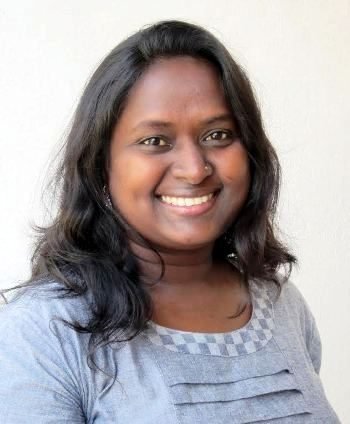
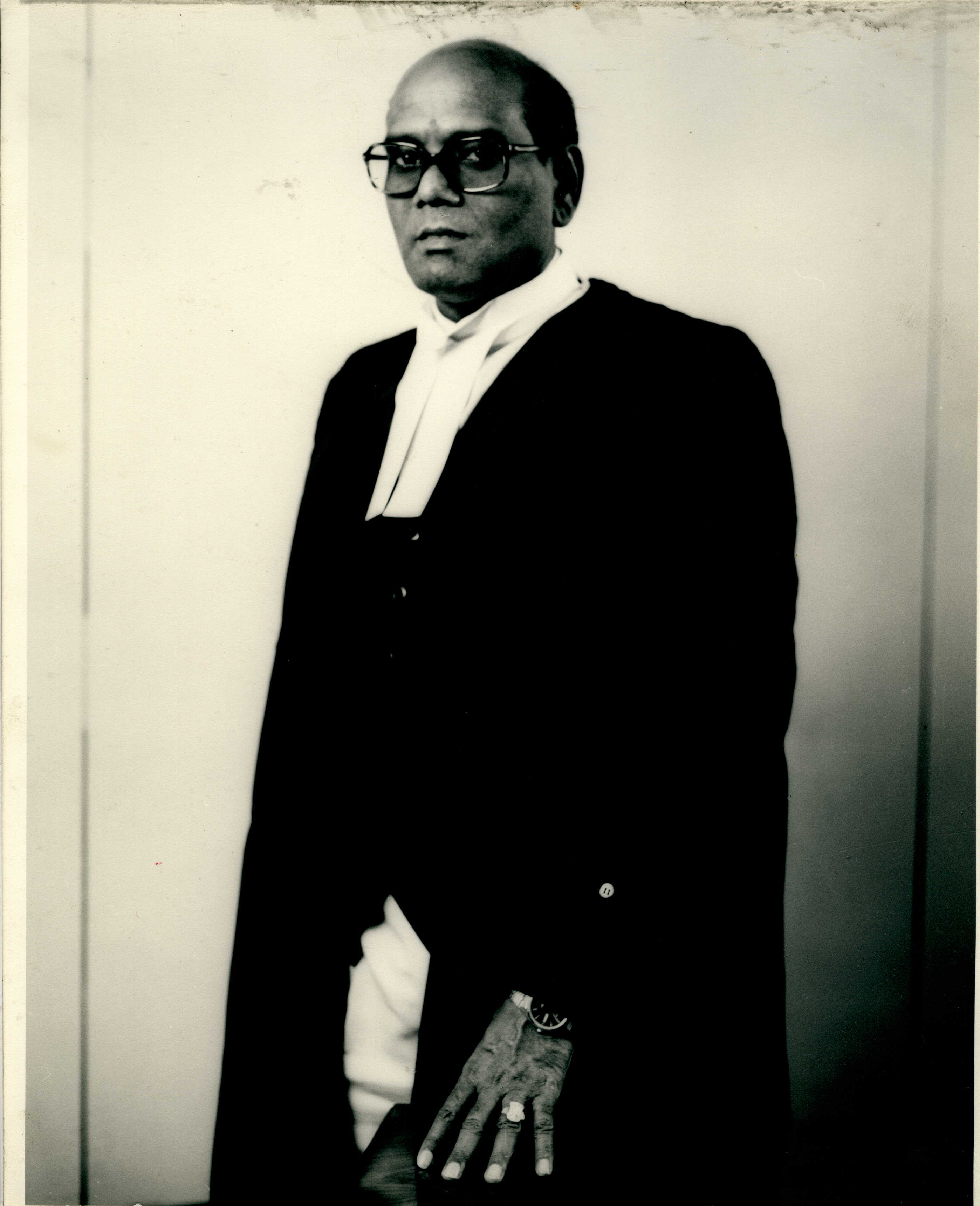

 Indian
Indian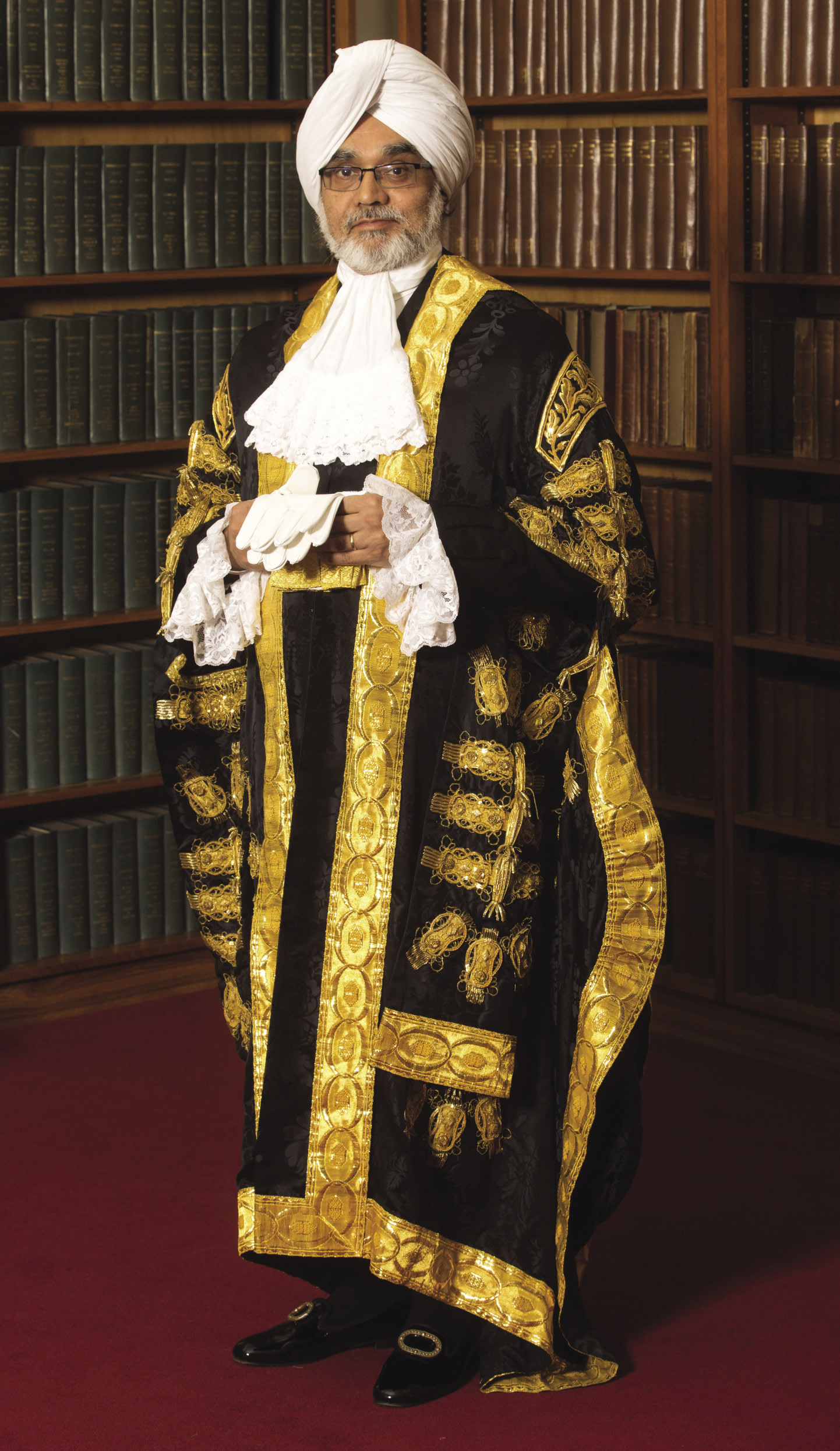



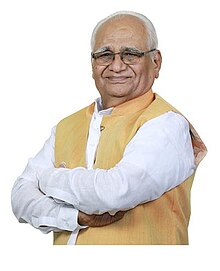
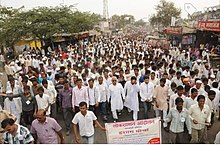




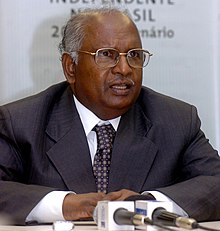

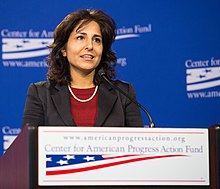
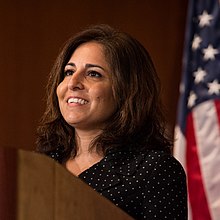
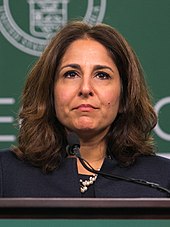
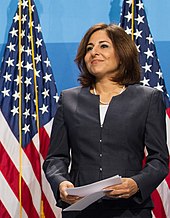
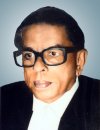




.jpg)


No comments:
Post a Comment
Thanks for feedback